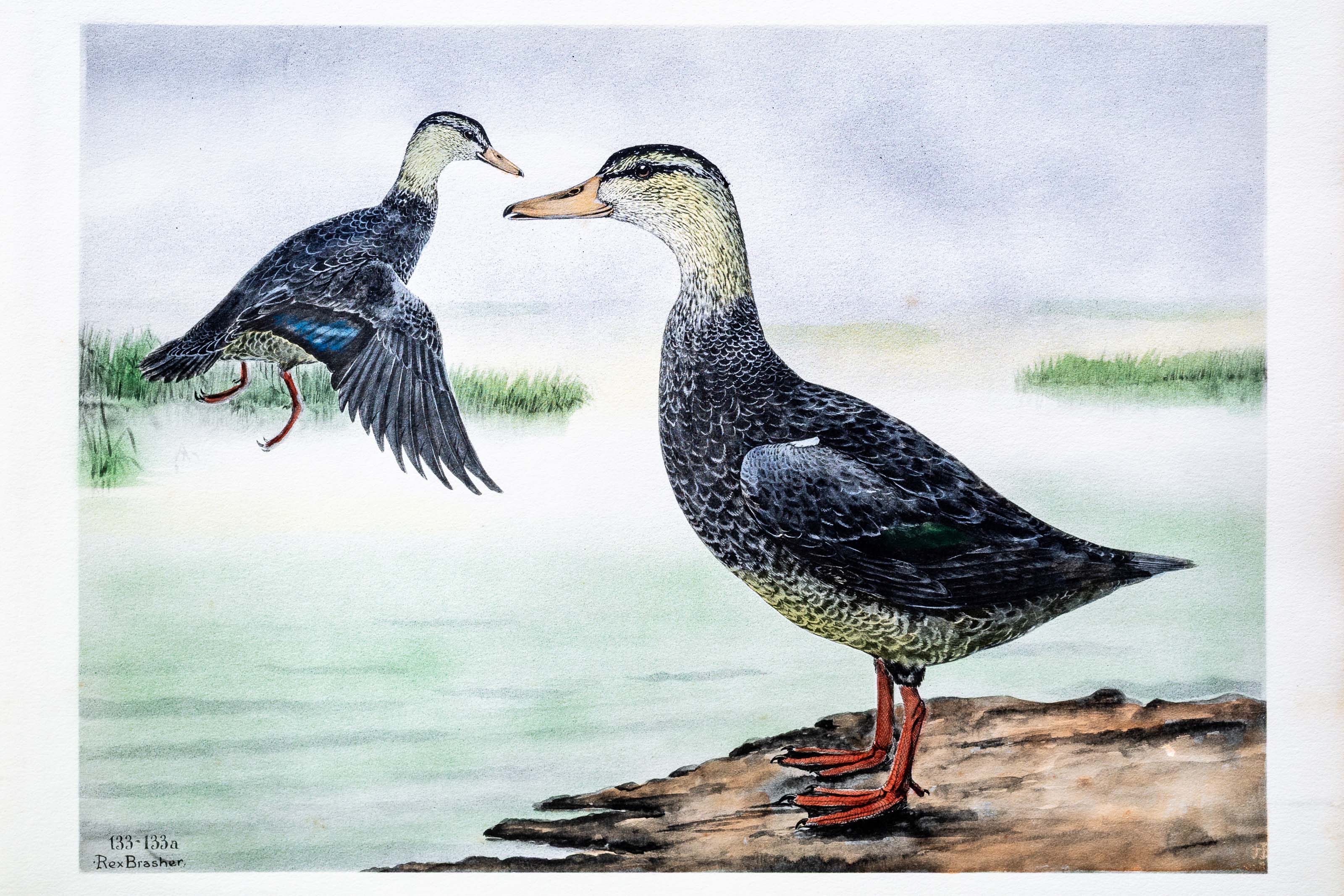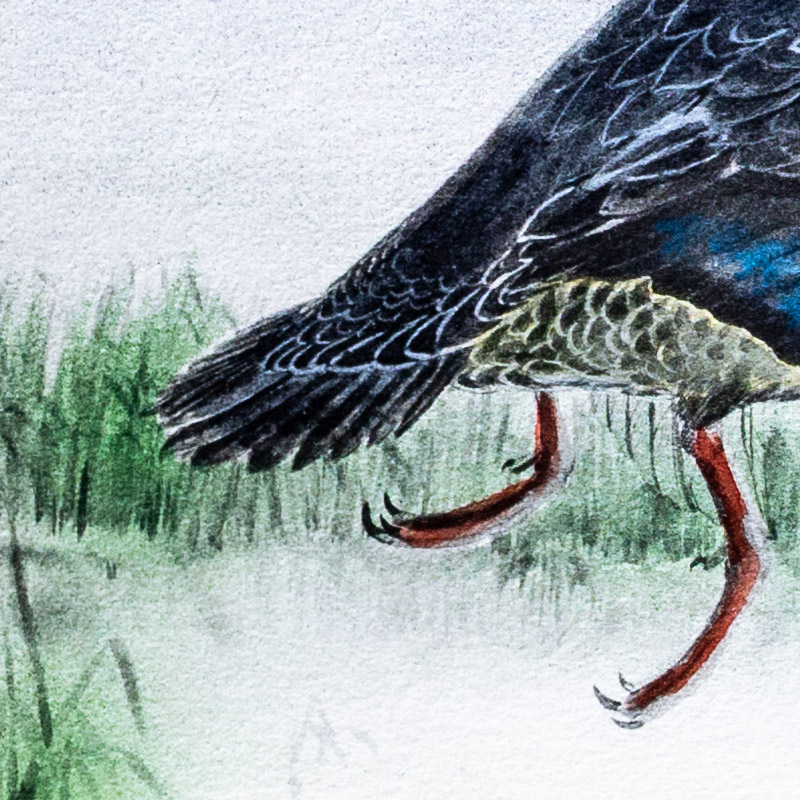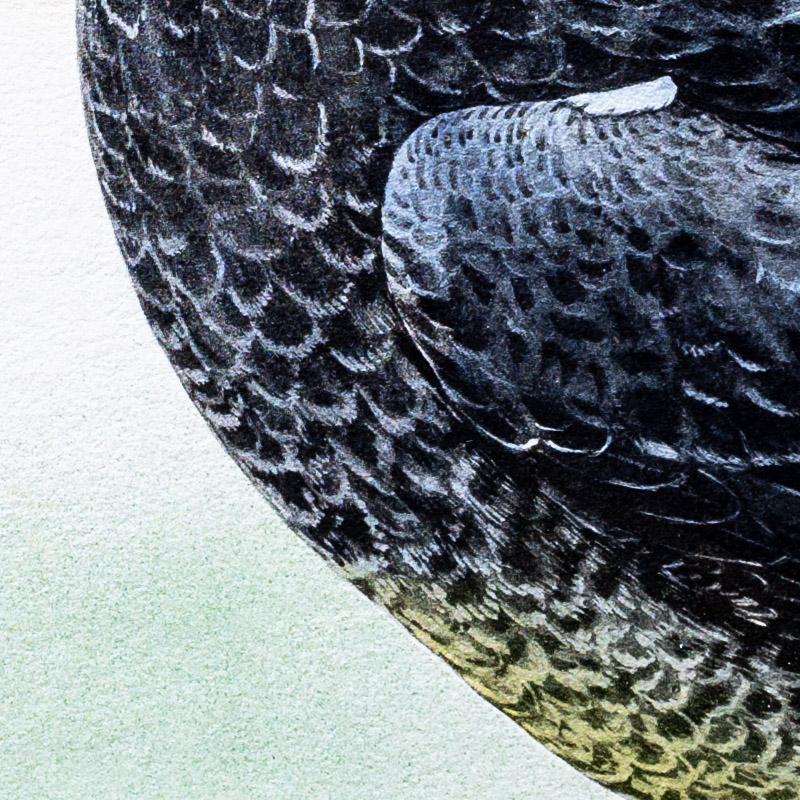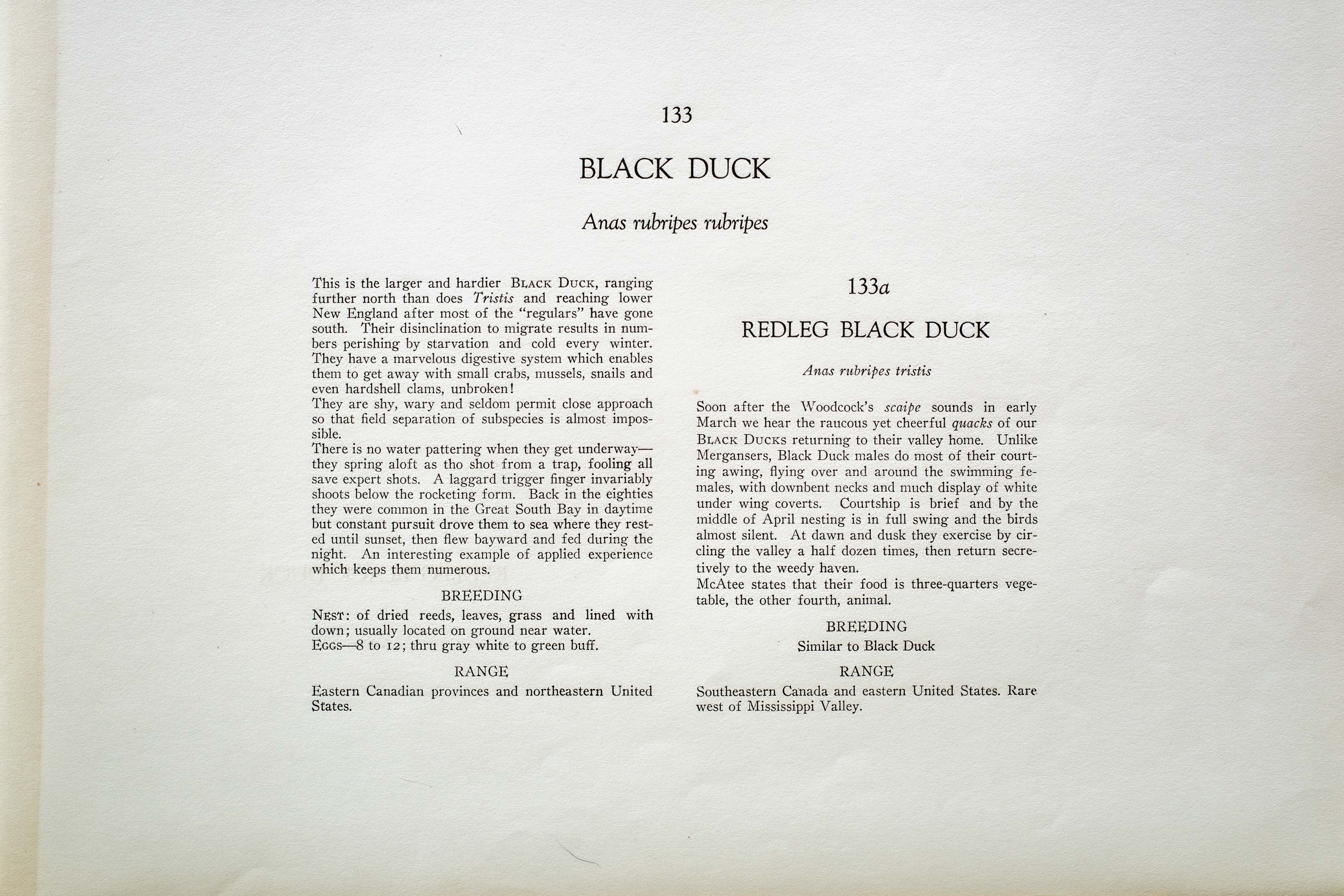






Unknown
1930
3
133-133a
A team of dedicated board members, volunteers, and student interns has published every page in Volume 9. This volume includes 360 images of paintings and lyrical descriptions of birds, now available online for everyone to enjoy anywhere in the world. This is a monumental task. Each volume requires approximately 400 hours to photograph, edit, transcribe, catalog, and publish online. We need your support to complete this work.
If you're tech-savvy, have a good eye, are meticulous with details, and love structured data, please consider volunteering by emailing us at hello@rexbrasher.org.
We encourage all bird lovers and supporters to consider a monetary donation to support our mission to make Rex's work available for everyone. You can provide a one-time or recurring donation online.
This is the larger and hardier BLACK DUCK, ranging further north than does Tristis and reaching lower New England after most of the "regulars" have gone south. Their disinclination to migrate results in numbers perishing by starvation and cold every winter. They have a marvelous digestive system which enables them to get away with small crabs, mussels, snails and even hardshell clams, unbroken!
They are shy, wary and seldom permit close approach so that field separation of subspecies is almost impossible.
There is no water pattering when they get underway — they spring aloft as tho shot from a trap, fooling all save expert shots. A laggard trigger finger invariably shoots below the rocketing form. Back in the eighties they were common in the Great South Bay in daytime but constant pursuit drove them to sea where they rested until sunset, then flew bayward and fed during the night. An interesting example of applied experience which keeps them numerous.
NEST: of dried reeds, leaves, grass and lined with down; usually located on ground near water.
EGGS — 8 to 12; thru gray white to green buff.
Eastern Canadian provinces and northeastern United States.
Soon after the Woodcock's scaipe sounds in early March we hear the raucous yet cheerful quacks of our BLACK DUCKS returning to their valley home. Unlike Mergansers, Black Duck males do most of their courting awing, flying over and around the swimming females, with downbent necks and much display of white under wing coverts. Courtship is brief and by the middle of April nesting is in full swing and the birds almost silent. At dawn and dusk they exercise by circling the valley a half dozen times, then return secretively to the weedy haven.
McAtee states that their food is three-quarters vegetable, the other fourth, animal.
Similar to Black Duck.
Southeastern Canada and eastern United States. Rare west of Mississippi Valley.